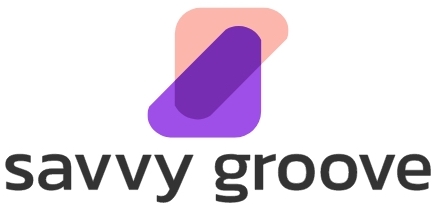The Importance of Landing Pages for Small Businesses: Boosting Conversions and Maximizing ROI
In today’s digital age, having a strong online presence is crucial for small businesses to thrive. One of the most effective tools for driving conversions and maximizing return on investment (ROI) is a well-designed landing page. A landing page is a standalone web page that is specifically created to capture leads or prompt visitors to take a desired action, such as making a purchase or signing up for a newsletter.
The importance of landing pages for small businesses cannot be overstated. According to a study by HubSpot, companies with 10 to 15 landing pages saw a 55% increase in leads compared to those with less than 10 landing pages. This highlights the power of having multiple landing pages tailored to different target audiences or marketing campaigns.
Landing pages provide a focused and streamlined experience for visitors, eliminating distractions and guiding them towards a specific goal. Unlike a homepage or a blog post, landing pages are designed with a singular purpose in mind, making them highly effective in converting visitors into customers. By providing a clear call-to-action and removing any unnecessary elements, landing pages can significantly increase conversion rates.
Designing Effective Landing Pages: Key Elements and Best Practices for Small Businesses
To create an effective landing page, small businesses need to consider several key elements and best practices. Firstly, the headline and subheadline should be attention-grabbing and clearly communicate the value proposition. This is the first thing visitors see, and it should immediately capture their interest and convey the benefits of the product or service being offered.
Additionally, the landing page should have a visually appealing design that aligns with the brand’s identity. The use of high-quality images, videos, and graphics can help engage visitors and make the page more memorable. It is important to strike a balance between aesthetics and functionality, ensuring that the page is visually appealing while still being easy to navigate.
Another crucial element is the call-to-action (CTA). The CTA should be prominently displayed and clearly communicate what action the visitor should take. It should be concise, persuasive, and use action-oriented language. A/B testing different CTAs can help determine which ones are most effective in driving conversions.
Furthermore, small businesses should consider incorporating social proof on their landing pages. Testimonials, reviews, and case studies can help build trust and credibility, reassuring visitors that they are making the right decision by taking the desired action. Including trust badges or certifications can also help alleviate any concerns about security or legitimacy.
Optimizing Landing Pages for Small Business Success: Strategies to Drive Traffic and Increase Conversions
Once a landing page is designed, small businesses need to focus on driving traffic and increasing conversions. One effective strategy is to optimize the landing page for search engines through search engine optimization (SEO) techniques. By conducting keyword research and incorporating relevant keywords into the page’s content, meta tags, and URLs, small businesses can improve their visibility in search engine results and attract more organic traffic.
Paid advertising campaigns, such as pay-per-click (PPC) advertising, can also be used to drive targeted traffic to landing pages. By carefully selecting keywords, creating compelling ad copy, and optimizing landing pages for specific ad campaigns, small businesses can increase their chances of attracting qualified leads and maximizing conversions.
Another strategy to consider is creating personalized landing pages for different target audiences or marketing campaigns. By tailoring the messaging and design to specific segments, small businesses can increase relevance and engagement, ultimately driving higher conversion rates. Personalization can be achieved through dynamic content, such as displaying different offers or testimonials based on the visitor’s demographics or previous interactions with the website.
Tracking and Analyzing Landing Page Performance: Tools and Metrics for Small Business Owners
To measure the effectiveness of landing pages and make data-driven decisions, small business owners should utilize tracking and analytics tools. Google Analytics is a popular and powerful tool that provides valuable insights into visitor behavior, conversion rates, and traffic sources. By setting up goals and tracking conversions, small businesses can identify areas for improvement and optimize their landing pages accordingly.
Heatmap tools, such as Crazy Egg or Hotjar, can also be used to visualize visitor behavior and identify areas of the landing page that receive the most attention or engagement. This information can help small businesses make informed design decisions and optimize their landing pages for maximum impact.
Conversion rate optimization (CRO) is another important metric to track. CRO involves testing different elements of the landing page, such as headlines, CTAs, or form fields, to determine which variations lead to the highest conversion rates. A/B testing tools, like Optimizely or Google Optimize, can be used to conduct experiments and identify the most effective variations.
Landing pages play a crucial role in boosting conversions and maximizing ROI for small businesses. By designing effective landing pages with attention-grabbing headlines, visually appealing designs, clear CTAs, and social proof, small businesses can increase their chances of converting visitors into customers. By optimizing landing pages for search engines, driving targeted traffic, and personalizing the user experience, small businesses can further enhance their conversion rates. Finally, by tracking and analyzing landing page performance using tools and metrics such as Google Analytics, heatmaps, and CRO experiments, small business owners can continuously improve their landing pages and achieve greater success online.
